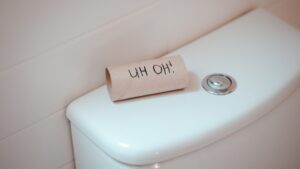
Toilet Flushes Slow:5 Reasons And Solutions
Sometimes, when your toilet flushes slow, it can feel more like a sluggish stream than a powerful waterfall. This means you’re dealing with a weak

Ah, the humble lavatory. To remove limescale, which is a devilish little thing that lurks in the water, we must be vigilant. This trusty friend and companion, the loo, is not only a place to relieve ourselves from bodily needs but also from the stress of a long day. It’s a wonderful refuge from our day-to-day life, deserving our care.
Limescale loves to grip onto our lovely white toilet bowl, leading to unseemly discolouration of the porcelain over time. Therefore, we’ve decided to put together a guide of the do’s and don’ts on how to effectively tackle this issue.
First things first, before you tackle the beast, you need to know what it is. Limescale is a sneaky little thing. It’s a hard, chalky deposit, consisting mainly of calcium carbonate (CaCO3). It often tends to build up in kettles, hot water boilers, and pipework, especially for hot water. Limescale builds up in places where “hard water” evaporates, leaving behind stains that can vary in color.
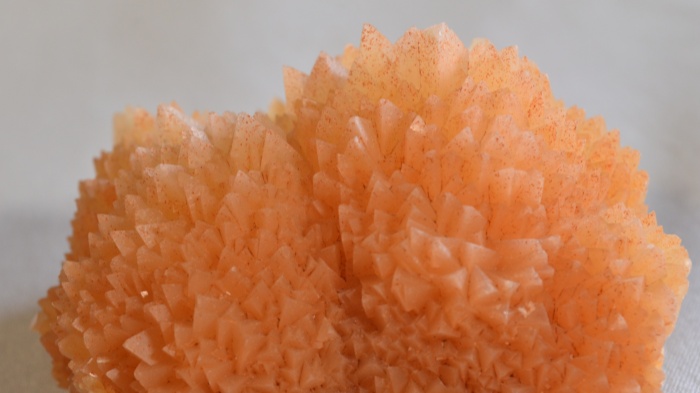
After which, limescale usually turns a funny color. The colors can range from off-white through to a range of greys and pink or reddish browns. In addition to being hard to clean and not so pleasing to the eye, it can cause serious damage to plumbing and heating components.
When it comes to cleaning methods, myths abound. That’s why we’ve rigorously tested popular methods and are here to present our findings. Here are the two most common limescale removal myths we’ve debunked:
Bleach – Often hailed as a household hero, bleach is known for removing tough stains, brightening surfaces, disinfecting, and its potent germ-killing properties. It’s no wonder many believe it’s effective against limescale. However, the truth is, it merely masks the problem by brightening the discoloration, making the limescale more harmful as it remains unseen and its damage unnoticed.
Coca-Cola – This myth suggests that pouring a bottle of Coca-Cola into the toilet bowl and leaving it overnight will dissolve the limescale. The theory is that the cola’s acidic content will break down the limescale. Unfortunately, our tests yielded poor results. We ended up with a toilet bowl stained with a cola-colored limescale residue.
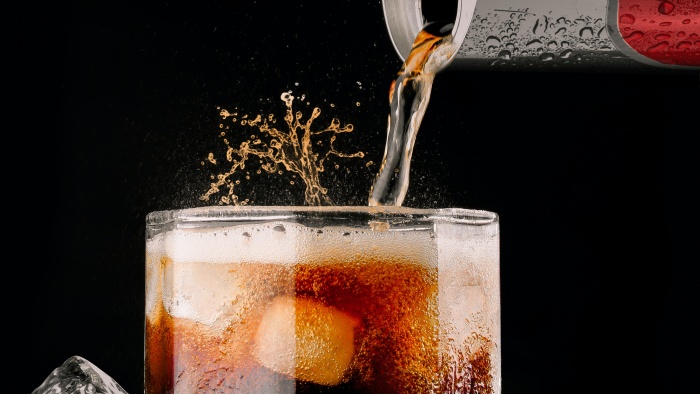
Now that we’ve debunked those myths, let’s dive into some practical DIY methods for removing limescale from your toilet. You’ll need:
That’s all! Here are our two tried-and-true techniques for limescale removal:
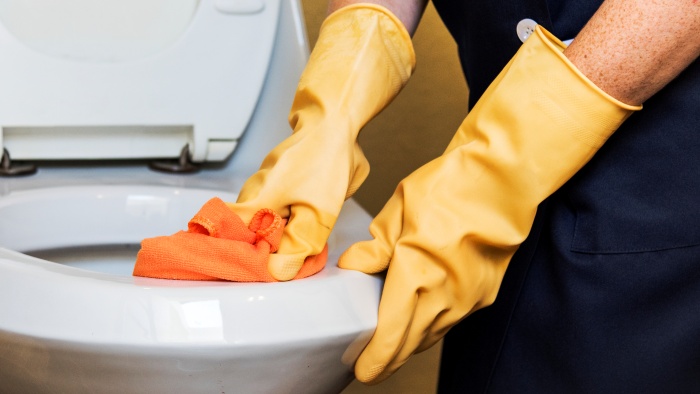
For this technique, we suggest employing two types of sandpaper – medium-grain and fine-grain.
To prevent limescale from forming, it’s crucial to adopt certain practices. Regular cleaning of bathroom fixtures is key.
Using a water softener can significantly reduce the impact of hard water on your bathroom appliances, thereby lessening limescale accumulation.
Additionally, it’s advisable to monitor water usage and temperature, as hotter water can accelerate limescale buildup.
When choosing cleaning products and methods, it’s essential to consider their environmental impact. We encourage the use of eco-friendly cleaning agents and techniques.
Opting for natural, biodegradable substances like vinegar or baking soda can be effective against limescale while minimizing harm to the environment.
Also, being mindful of the quantity of cleaning products used and disposing of them responsibly is vital for environmental conservation.
In summary, to effectively remove limescale from your toilet and maintain a clean, healthy bathroom environment, it’s important to use the right methods and materials.
Regular use of natural cleaners like white vinegar and the appropriate use of sandpaper can effectively combat limescale buildup.
Additionally, adopting preventive measures such as regular cleaning and the use of water softeners can significantly reduce limescale formation.
Remember, opting for eco-friendly cleaning solutions not only aids in limescale removal but also helps in preserving the environment. By following these guidelines, you can keep your toilet free from limescale and maintain a more sustainable home.
What is the safest way to handle sandpaper when removing limescale?
When using sandpaper for limescale removal, it’s essential to wear protective gloves to prevent abrasions on your hands. Begin with gentle strokes and avoid excessive pressure to prevent damage to the toilet surface. Always start with a medium-grain and finish with a fine-grain for a smooth result.
Can regular household items be used for limescale prevention?
Yes, everyday items like lemon juice or diluted apple cider vinegar can be effective for limescale prevention. These natural acids help to break down limescale deposits when used regularly in cleaning routines. However, for more severe cases, stronger solutions might be necessary.
How often should I clean my toilet to prevent limescale buildup?
Regular cleaning is key to preventing limescale buildup. Cleaning your toilet once a week with a vinegar solution or an eco-friendly cleaner can significantly reduce limescale accumulation and maintain toilet hygiene.
Are there any health risks associated with limescale in toilets?
Limescale itself is not harmful to health; however, it can provide an environment for bacteria to grow. Regular cleaning and removal of limescale are important to maintain a hygienic bathroom environment.
What are some environmentally friendly alternatives to chemical limescale removers?
In addition to white vinegar and baking soda, other eco-friendly alternatives include citric acid (found in lemons) and borax. These substances are effective in breaking down limescale and are safer for the environment compared to harsh chemicals. Always follow proper dilution guidelines to ensure effectiveness and safety.


Sometimes, when your toilet flushes slow, it can feel more like a sluggish stream than a powerful waterfall. This means you’re dealing with a weak

Blue toilet water, often seen as a sign of cleanliness, is usually the result of using those tank cleaning tablets. While they might appear to

How to unclog toilet is not often a thought until trouble strikes. When our toilet clogs or malfunctions, it becomes more than just a small

Contrary to common belief, your clean toilet isn’t the most bacteria-ridden place in your house. In fact, your smartphone, keyboard, or backpack harbor far more
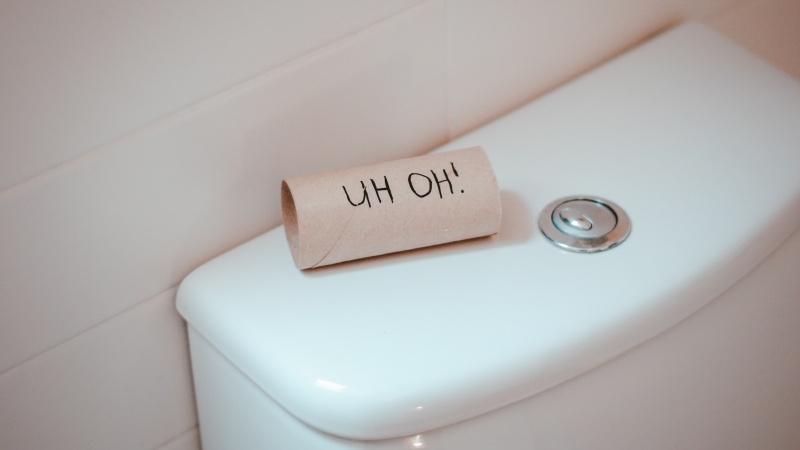
Sometimes, when your toilet flushes slow, it can feel more like a sluggish stream than a powerful waterfall. This means you’re dealing with a weak

Blue toilet water, often seen as a sign of cleanliness, is usually the result of using those tank cleaning tablets. While they might appear to
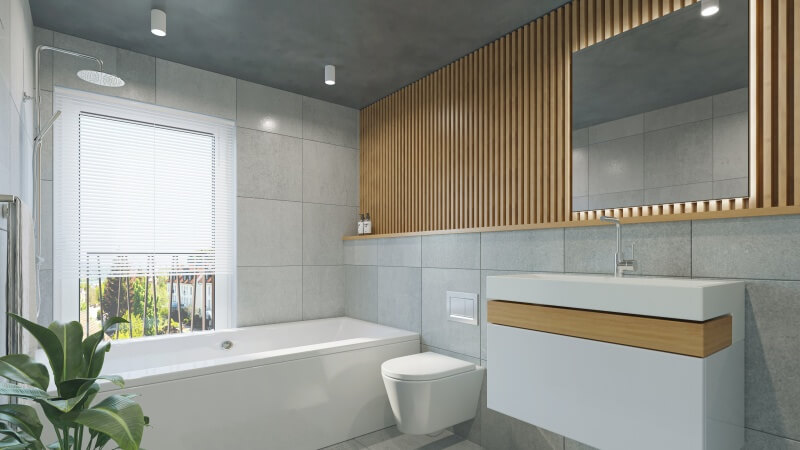
How to unclog toilet is not often a thought until trouble strikes. When our toilet clogs or malfunctions, it becomes more than just a small

Contrary to common belief, your clean toilet isn’t the most bacteria-ridden place in your house. In fact, your smartphone, keyboard, or backpack harbor far more
Copyright © 2024 toiletlighton. All Rights Reserved.